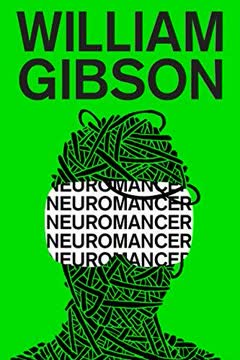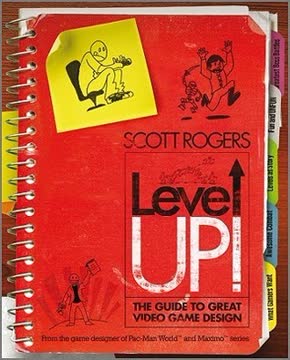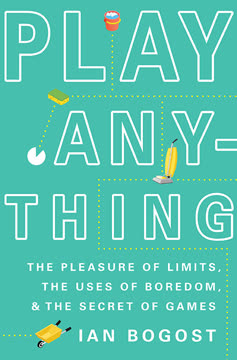Key Takeaways
1. Procedural Rhetoric: Persuasion through Rule-Based Systems
Procedural rhetoric, then, is a practice of using processes persuasively.
Defining procedural rhetoric. This new form of persuasion leverages the unique capabilities of computational systems, particularly their ability to execute rules and simulate processes. Unlike verbal or visual rhetoric, which persuade through language or imagery, procedural rhetoric makes arguments by demonstrating how systems work through interactive models. It's about persuading through the logic and behavior of rules.
Computers excel at processes. Computers are fundamentally machines for running processes, executing calculations, and manipulating symbols based on rules. This makes them uniquely suited to representing real or imagined systems that operate according to specific logics. Procedural rhetoric taps into this core affordance, allowing authors to build arguments directly into the operational mechanics of software.
Beyond traditional rhetoric. While rhetoric has historically focused on spoken or written word and, more recently, visual media, procedural rhetoric expands the field to encompass the persuasive power of interactive, rule-based systems. It's a technique for both creating arguments with software and for analyzing the arguments embedded in the software others have created.
2. Videogames: A Unique Medium for Procedural Expression
Videogames are computational artifacts that have cultural meaning as computational artifacts.
Process-intensive and expressive. Videogames are particularly potent examples of procedural rhetoric because they are highly process-intensive, running complex code to generate dynamic behaviors. More importantly, they are consciously crafted as expressive artifacts, aiming for representational goals akin to literature or film, rather than purely instrumental utility like word processors.
Interactive arguments. Many videogames require user interaction to unfold their procedural representations. This interactivity allows for a unique form of rhetorical engagement, where the player actively participates in completing the argument embedded in the game's rules. This can create a powerful connection between the player's actions and the game's message.
Selective representation. Videogames don't recreate reality; they selectively model specific aspects of real or imagined systems. This selective representation is key to their expressive power, drawing attention to particular processes or relationships. The choices about what to include and exclude in the rules are fundamental to the procedural argument being made.
3. Political Games: Exposing Ideological Frames
Political videogames use procedural rhetorics to expose how political structures operate, or how they fail to operate, or how they could or should operate.
Operationalizing political logic. Games can codify the underlying logic of political systems, making visible the often-hidden rules that drive political thought and action. By playing these games, we gain a detached perspective on the ideologies that shape political situations, seeing how they function through rule-based interactions.
Frames in action. Drawing on concepts like George Lakoff's "frames," political games translate abstract political metaphors (e.g., "taxation as theft") into tangible, playable mechanics. Games like Tax Invaders don't just talk about fighting taxes; they make the player act out fighting taxes, reinforcing the ideological frame through procedural embodiment.
Beyond verbal arguments. While traditional political discourse relies on verbal or written rhetoric to frame issues, political games offer a new way to experience these frames directly. They allow players to step inside a political logic and see its consequences unfold through gameplay, offering a unique form of political commentary and critique.
4. The Rhetoric of Failure: Showing How Systems Don't Work
If procedural rhetorics function by operationalizing claims about how things work, then videogames can also make claims about how things don’t work.
Proceduralizing dysfunction. Games can effectively argue that a system or strategy is flawed by designing rules that make success impossible or undesirable when following a particular approach. This "rhetoric of failure" is particularly potent in political games that critique dysfunctional practices.
Beyond unwinnable games. Unlike simple unwinnable games that rely on player inability, games employing the rhetoric of failure demonstrate that the system itself is broken. September 12, for example, shows that using missiles against terrorists inevitably harms innocents, arguing that this counterterrorism strategy is inherently flawed, not just difficult to execute.
Crisis and reflection. Experiencing the failure of a system within a game can create a crisis for the player, prompting reflection on why the system doesn't work as intended. This can lead to deeper insights than simply being told about the system's flaws, encouraging players to think critically about real-world parallels.
5. Advertising Games: Beyond Images to Product Function
Advergames are simulations of products and services.
Simulating product interaction. Advergames, when effectively designed, go beyond merely displaying logos or associating brands with lifestyles. They use procedural rhetoric to simulate how a product or service actually functions, allowing players to experience its features and benefits directly within the game world.
Demonstrative advertising in play. This approach aligns with "demonstrative advertising," which focuses on the tangible utility of products. Games like Tooth Protectors or Fiskars Prune to Win operationalize the use of specific products, showing players how they work and why they might be needed in a simulated context.
Beyond associative branding. While many advergames rely on "associative advertising," linking brands to desirable lifestyles or activities (e.g., Mountain Dew Skateboarding), the most persuasive ones leverage procedurality to demonstrate functional value. This shifts the focus from merely recognizing a brand to understanding its practical application.
6. Licensed Games: Operationalizing Cultural Properties
This procedural rendering of a license has the potential to open the property to interrogation and critique on the part of the player.
Translating properties into rules. Licensed games, based on films, sports, or other cultural properties, must translate the source material into playable rules and mechanics. This process of operationalization can reveal underlying logics or tensions within the original property that might not be apparent in linear media.
Interrogating underlying values. Games like the Harry Potter adaptations, by proceduralizing elements like teamwork or the rules of Quidditch, can highlight themes like individualism versus collaboration or the tension between skill and transcendent power, prompting players to reflect on these values within the franchise.
Beyond mere branding. While licenses often serve as simple associative advertising, games can use procedural rhetoric to make claims about the licensed property itself. SeaWorld Adventure Parks Tycoon, for instance, simulates the business logic of running a theme park, exposing the operational realities behind the "magic" of the brand.
7. Educational Games: Cultivating Procedural Literacy
Procedural literacy entails the ability to reconfigure concepts and rules to understand and processes, not just on the computer, but in general.
Learning through rule systems. Educational games teach not just content (like facts or dates) or abstract skills (like problem-solving), but procedural literacy – the ability to understand, interpret, and manipulate rule-based systems. They teach how things work by letting players interact with models of those processes.
Beyond behaviorism and constructivism. Moving beyond the limitations of behaviorist content transfer or constructivist abstract skill-building, procedural literacy focuses on the specific yet generalizable insights gained from interacting with rule-based representations of particular subjects. It's about understanding the logic embedded in a system.
Embodied understanding. Games provide embodied experiences of procedural systems, allowing players to learn by doing within a simulated context. Games like Sim City or Europa Universalis operationalize theories of urban dynamics or history, enabling players to explore the consequences of different rules and conditions.
8. Values and Aspirations: Games Reveal Consumption Logics
Animal Crossing mounts a procedural rhetoric of debt and consumption that successfully simulates the condition of affluenza.
Operationalizing social dynamics. Games can simulate the procedural logics that drive social and economic behaviors, such as consumption and debt. By placing players within these simulated systems, games allow them to experience the consequences of different choices and reflect on their own values and aspirations.
Critiquing consumerism. Games like Animal Crossing don't just model consumption; they can critique it by creating tensions between competing values, such as material acquisition versus community or environmental well-being. The game's rules can highlight the often-hidden costs or absurdities of consumer culture.
Beyond simple reinforcement. Unlike traditional schooling or training that reinforces existing institutional values, educational games can expose the underlying logics of these systems. By proceduralizing concepts like debt, work, or social status, games allow players to interrogate the values embedded in these real-world structures.
9. Workplace Games: Understanding Business Models
Training videogames become educational when they stop enforcing a process as a set of arbitrary rules in the service of the organization and begin presenting a procedural rhetoric for the business model that the employee has been asked to work under.
Simulating corporate processes. Games can operationalize the specific procedures and business models of corporations, providing employees with a simulated experience of how their work contributes to the larger organizational logic. This goes beyond rote task training to understanding the 'why' behind the 'how'.
Exposing the business logic. Games like Cold Stone Creamery: Stone City simulate tasks like portioning ice cream, but also connect these actions to the store's profitability and customer retention. This procedural rhetoric reveals the direct link between individual performance and the company's bottom line, making the business model tangible.
Empowering the worker. By providing a perspective on the business model, training games can empower employees to understand the system they work within. This understanding can lead to critical reflection on the value system of the workplace, potentially fostering a sense of agency beyond simply following instructions.
10. Exergames: Operationalizing Physical Activity
Exergames with a procedural rhetoric of training operationalize the core properties of the trainer—an agent impelling a chain of continuous, high-quality physical movements—rather than the trainer’s physical form.
Proceduralizing exercise. Exergames use game mechanics and physical input devices to motivate and structure physical activity. They translate movements like running, jumping, or stepping into in-game actions, creating a direct link between physical exertion and gameplay progress.
Beyond simple reflexes. While some exergames rely on reflex-based mechanics (like hitting targets), more sophisticated ones employ training rhetorics. Games like Dance Dance Revolution or Yourself! Fitness operationalize the role of a personal trainer, providing incremental feedback and motivation to encourage sustained, rhythmic physical activity.
Motivating through play. These games embed exercise within engaging gameplay loops, using scoring, combos, unlockable content, and immediate feedback to incentivize continued physical exertion. They aim to make exercise an emergent outcome of play itself, rather than a separate, often less appealing activity.
11. Measuring Persuasion: Beyond Numbers to Deliberation
Unlike classical persuasion, homily enforces a set of constraints—one would not be wrong to call them rules—that are intended to structure thought and action for the object of the persuasion.
Beyond quantitative metrics. Measuring the success of procedural rhetoric goes beyond simple numerical assessment like sales figures, test scores, or play counts. These metrics often serve the interests of sponsoring institutions rather than capturing the full impact of the game's message.
Producing deliberation. Persuasive games aim to produce deliberation, not just immediate assent or dissent. They expose the logic of a situation, creating a "simulation fever" or crisis that prompts players to question and reflect on the represented system and its real-world parallels.
Transformation over time. Like religious homily or artistic expression, the persuasion of procedural rhetoric unfolds over time. Its success is measured not by an immediate change in behavior or opinion, but by the ongoing process of reflection, conversation, and potential transformation it inspires in the player's understanding and actions.
12. Procedural Rhetoric: A Humanistic Practice
As the name suggests, the humanities help us understand what it means to be human, no matter the contingencies of profession, economics, or current affairs.
Understanding human systems. Procedural rhetoric, as a form of procedural literacy, helps us understand the rule-based systems that structure human culture, society, and experience. It provides a new lens for analyzing the logics that drive our world, from political processes to consumption habits.
Beyond technical mastery. Procedural literacy is not just about programming or understanding algorithms; it's about interpreting the cultural meaning embedded in rule-based systems. It's the ability to "read and write" arguments made through processes, connecting technical structures to human values and experiences.
A new form of discourse. Like literature, art, and philosophy, procedural rhetoric contributes to humanistic discourse. By making claims about how the world works through interactive models, games invite players to engage in critical reflection, conversation, and ultimately, to shape their understanding of what it means to be human in a world increasingly governed by complex, often hidden, procedural systems.
Last updated:
FAQ
1. What is Persuasive Games: The Expressive Power of Videogames by Ian Bogost about?
- Exploration of videogames as rhetoric: The book argues that videogames are a powerful expressive medium capable of making arguments and representing real and imagined systems through interactive rules and mechanics.
- Procedural rhetoric as central theme: Bogost introduces and develops the concept of procedural rhetoric, which is the art of persuasion through rule-based processes rather than traditional media like text or images.
- Domains of application: The book examines how videogames influence and persuade in politics, advertising, and education, showing their cultural and social significance.
- Critical engagement: It encourages readers to see games as more than entertainment, highlighting their potential to provoke critical thought and shape cultural discourse.
2. Why should I read Persuasive Games by Ian Bogost?
- Framework for understanding games: The book provides a unique lens to analyze videogames as persuasive and expressive cultural artifacts, not just as entertainment.
- Critical media literacy: Readers gain tools to critically assess how games shape attitudes about politics, consumerism, morality, and learning through their procedural systems.
- Guidance for creators and players: Both game designers and players can benefit from understanding the values and logics embedded in games and their broader social impact.
- Broader cultural relevance: The book is essential for anyone interested in media studies, digital culture, or the intersection of technology and society.
3. What are the key takeaways from Persuasive Games by Ian Bogost?
- Videogames as persuasive media: Games can mount arguments and influence players by simulating systems and inviting interaction.
- Procedural rhetoric’s importance: Understanding how rules and processes persuade is crucial for interpreting and designing meaningful games.
- Cultural legitimacy of games: Videogames deserve recognition as serious cultural artifacts capable of expressing complex ideas and ideologies.
- Critical reflection through play: Engaging with games can foster critical thinking about the systems and values they represent.
4. What is “procedural rhetoric” as defined by Ian Bogost in Persuasive Games?
- Definition: Procedural rhetoric is the practice of persuading through computational processes—authoring rules and dynamic models that embody arguments.
- Contrast with other rhetorics: Unlike verbal or visual rhetoric, procedural rhetoric uses interactive systems to make claims and invite player judgment.
- Examples in games: Titles like Tenure or Balance of the Planet use procedural rhetoric to simulate complex social or political systems, letting players experience and critique them.
- Unique to videogames: This form of rhetoric leverages the computer’s ability to execute rule-based symbolic manipulations, making it distinct from other media.
5. How does Ian Bogost’s concept of procedural rhetoric differ from persuasive technology or “captology”?
- Focus on argument vs. behavior: While captology studies computers as tools to change attitudes or behaviors, procedural rhetoric emphasizes constructing arguments through computational processes.
- Depth of engagement: Procedural rhetoric involves engaging users in dialectical argument, not just behavior modification or persuasion tactics.
- Critique of captology: Bogost argues that persuasive technology often serves existing power structures and misses the unique expressive potential of videogames.
- Procedural affordances: The book highlights how games can challenge, support, or disrupt ideologies through their rule-based systems.
6. How does Persuasive Games by Ian Bogost address the cultural legitimacy of videogames?
- Perception as trivial: The book discusses how videogames are often dismissed as children’s entertainment or low art, lacking the credibility of traditional media.
- Historical parallels: Bogost draws comparisons to comics, television, and film, which also struggled for legitimacy before being critically understood.
- Need for deeper understanding: He argues that time alone won’t legitimize games; instead, a deeper knowledge of their expressive power is necessary.
- Role of procedural rhetoric: Recognizing how games make arguments and represent systems is key to establishing their cultural significance.
7. How does Persuasive Games relate videogames to politics and ideology?
- Political procedural rhetorics: The book explores how games represent political ideologies and processes through rule-based systems, exposing underlying “frames.”
- Examples of political games: Titles like America’s Army, A Force More Powerful, and Take Back Illinois embody and critique political positions via gameplay.
- Ideology as procedural system: Games can reveal or challenge the hidden rules and logics that govern social and political behavior.
- Critical interrogation: Videogames can both reinforce and disrupt existing ideologies by making their logic visible and open to critique.
8. What are some notable examples of persuasive or political videogames discussed by Ian Bogost?
- Howard Dean for Iowa Game: Simulates grassroots campaigning, teaching political participation but struggling to convey unique political stances.
- JFK Reloaded: Challenges players to replicate the JFK assassination, prompting reflection on historical narratives and the performative nature of political violence.
- Take Back Illinois: Models interconnected public policy issues, helping players grasp legislative complexity and social impacts.
- Antiwargame and Vigilance 1.0: Use procedural rhetoric to critique war as business and surveillance as social control.
9. How does Persuasive Games analyze advertising and advergames in videogames?
- Advergames as procedural ads: These games simulate and promote products or services, embodying features or lifestyles through gameplay rather than just branding.
- Types of advertising: The book distinguishes between demonstrative, illustrative, and associative advertising, with most advergames focusing on associative branding.
- Product placement vs. dynamic ads: Effective product placement integrates products into gameplay meaningfully, while dynamic ads are often superficial and disrupt immersion.
- Critique of advergames: Many prioritize brand exposure over meaningful procedural representation, missing opportunities for deeper engagement.
10. What is procedural literacy, and how does Ian Bogost relate it to videogame learning in Persuasive Games?
- Beyond programming skills: Procedural literacy is the ability to interpret and create arguments and meanings expressed through rules and interactions, not just coding.
- Critical engagement with systems: It enables players to interrogate how games represent social, political, or cultural systems, fostering deeper understanding.
- Educational theories: The book relates procedural literacy to both behaviorist and constructivist perspectives, advocating for games as tools for active knowledge construction.
- Simulation gap and reflection: Games create a space for players to reflect on the difference between simulated systems and real-world experiences, promoting critical thought.
11. How does Persuasive Games address morality, ethics, and religion in videogames?
- Moral systems in games: The book examines how games implement procedural models of morality, from simple good/evil scales to complex ethical dilemmas.
- Limitations and sophistication: Many games reduce morality to binary choices, while others like Deus Ex portray moral uncertainty and nuanced decision-making.
- Religious games critique: Most religious-themed games fail to proceduralize faith or ethics, relying on trivia or symbolism, with few exceptions that integrate ritual into gameplay.
- Ethical reflection: The book encourages designers to create games that foster genuine ethical deliberation through procedural systems.
12. What is the significance of simulation gaps and “simulation fever” in Persuasive Games by Ian Bogost?
- Simulation gap defined: This is the space between a game’s procedural rhetoric and the player’s subjective interpretation, where meaning is negotiated.
- Simulation fever: Players experience cognitive dissonance when a game’s rules conflict with their values, prompting deeper engagement and reflection.
- Educational and rhetorical potential: These phenomena enable games to challenge assumptions and encourage critical thinking about represented systems.
- Critical contemplation through play: The book highlights how these gaps and tensions are essential for fostering deliberation and understanding in players.
Review Summary
Persuasive Games by Ian Bogost explores the concept of procedural rhetoric in video games. Reviewers praise its introduction of this novel idea but criticize its dated examples and sometimes dry academic writing style. The book's analysis of how game mechanics can convey messages is considered insightful, though some find the focus on "serious games" limiting. Despite its flaws, many readers appreciate Bogost's contribution to game criticism and find value in his exploration of games as persuasive tools in politics, advertising, and education.
Similar Books
Download PDF
Download EPUB
.epub digital book format is ideal for reading ebooks on phones, tablets, and e-readers.











